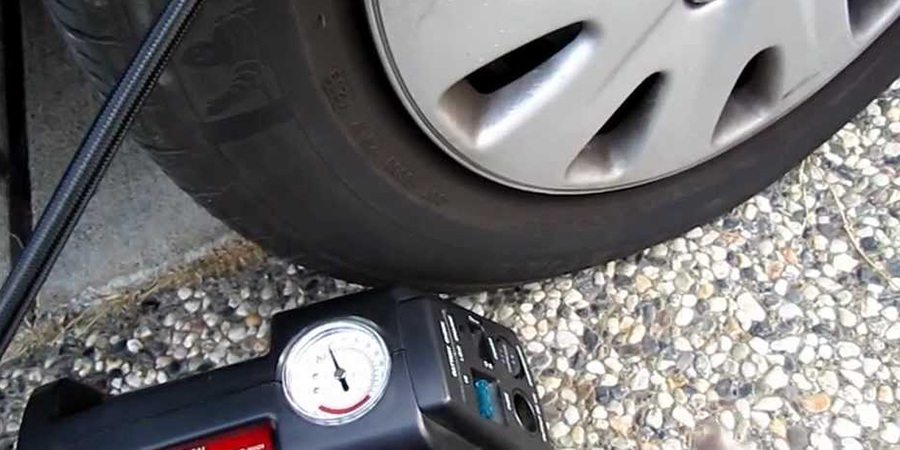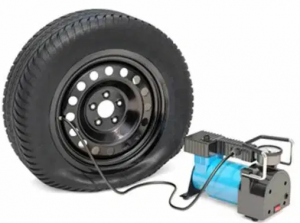You’re driving while you’re off-roading alongside the country watching a beautiful day around. Suddenly, there is a husky sound and a flat tire, enough to ruin the mood you were in, right? Well, we all face such problems where we end up with a car on a flat tire in the middle of nowhere. It would be a good journey if you could put air in the tire and start driving again within a few minutes.
I’m talking about air compressors that you can put in the toolbox and use it in almost any sort of tool work. It’s not enough only to get an air compressor for yourself as it doesn’t work on its own. You have to operate it, and you have to do the job efficiently and perfectly. Stick to the article as I get you through the process of how to use an air compressor to fill a tire:

Why Use an Air Compressor to Fill a Tire?
Air compressors that are designed for filling the air in flat tires will come in a very compact form factor. You can store it in a small space in the toolbox and plug it in the cigarette port. They also come in wireless, where you can use the battery to run without any hassle of having connected wire to it.
Without an air compressor, you cannot drive away when you’re stuck in the middle of nowhere. Getting an air compressor won’t just help you with a flat tire; it also helps you with other renovation projects. However, in some cases, it can be a problem if you need to have a power outlet. If you don’t want this inconvenience, go for a wireless air compressor.
What Size Air Compressor Do I Need To Fill Tires?
Using air compressors to airing up tires is the best option for choosing the right compressor size. First, don’t forget to check how much power you need; a 12 Volts compressor will be good enough for small truck tires or cars.
Tires have valves in them, so you can easily air up a tire with around 4 CFM for almost any sort of tire. Personal cars usually need only 35 PSI when it comes to the amount of pressure. You can stay on the safer side if you go for a standard 90-PSI air compressor to air up any tire from car to trucks.
How to Use an Air Compressor To Fill a Tire – Step by Step Guide

Filling up a tier with an air compressor can come in super handy, and it’s important to use it right. Using it a wrong way may damage the tire entirely as it puts huge pressure on the valve. Here is the step by step guide How to use an air compressor to fill a tire you have to follow:
Let the tire cool down first
Once you end up with a flat tire, let it cool down inside out before you jump in with an air compressor. It’s important because there is a high risk of an accident if you work with a hot tire and an air compressor. If you don’t let it cool down, the hot air inside will make extra pressure and rage out to damage the valve. Plus, when you’ll try to take the pressure measurement, it won’t give you accurate results, and your calculation will miss out.
Know how much pressure you need
First, you have to determine the optimum pressure level of the air compressor you need for the tire. You will get a clear instruction about it from the manual of the compressor. It usually starts from 28 to 36 PSI for cars and goes around 90 PSI for heavy tires for trucks.
Adjust the valve correctly
Before you start using the compressor, you have to adjust the tire valve correctly. Take the cap off the valve, keep it in a safe place, set the gauge up, and you’re good to go for filling in. Make sure you’re plugging in the gauge firmly in its place securely. If the gauge isn’t secure in its place, you may hear a hissing sound from the gauge’s escaping air.
Use the compressor correctly
It’s time to turn your air compressor and start working with it; start with connecting the hose nozzle to the valve. Ensure the valve and the nozzle are secure in place, making firm contact without any leakage. You will understand it once you have no hissing, which refers to a sealed contact.
Ensure a safe pressure level
While you fill in the air, make sure you don’t overdo it and detach the compressor once it’s adequate. Calculate how much air you should let out; use a pressure gauge for that. Put it in, see if the inside of the tire is good and take it off once you have a good pressure level.
Frequently Asked Questions
Here are the most frequently asked questions about air compressors, especially regarding tire that you might find useful:
Can you use an air compressor to fill a tire?
Can a tire lose air without a hole?
Can I put air in a flat tire?
Final Thought
Getting a flat tire where you cannot call out for help can be annoying, especially if you go off the terrain a lot. If you love to go for off-roading, make sure you have an air compressor to help yourself in a remote area. As I’ve guided you through the process of How to use an air compressor to fill a tire, you can make it an easy job if you’re determined. After all, it’s not a big deal to calculate the pressure, plug it in, and start filling the air in if you practice it. However, make sure you strictly follow the safety measurements to keep yourself and the car out of danger.
